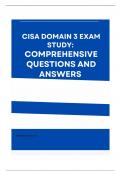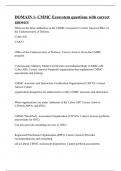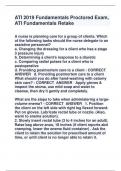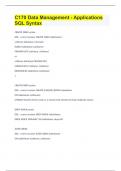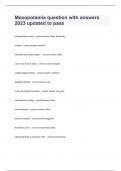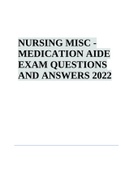Exam (elaborations)
CISA Domain 3 Exam Study Comprehensive Questions and Answers
- Course
- Institution
CISA Domain 3 Exam Study| Capability Maturity Models, Computer Aided Software Engineering (CASE), Benefits Realization, Programs, Examples of Programs, Objective of Program Management, Program MGMT vs Project MGMT methodology, Starting a program, Project Portfolio, Objectives of project portfolio...
[Show more]
